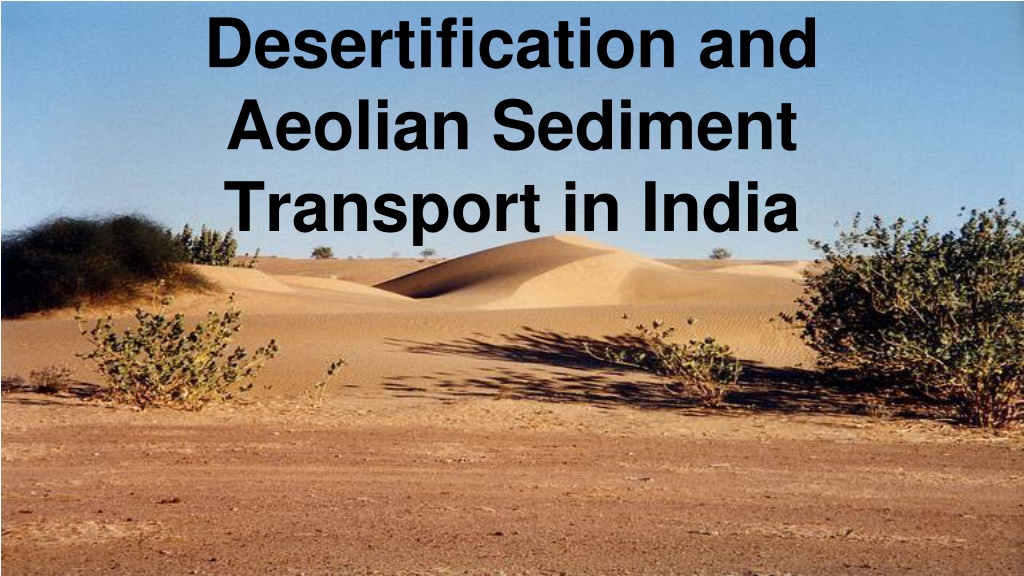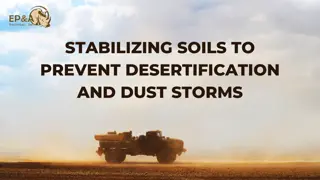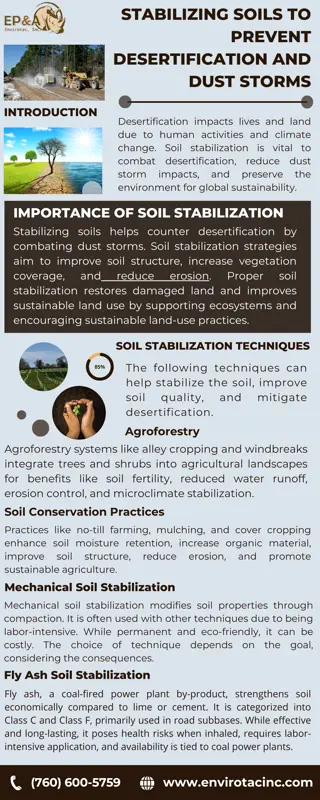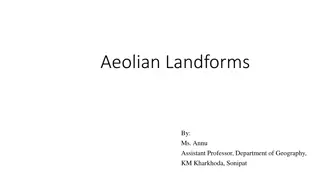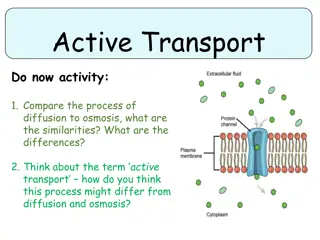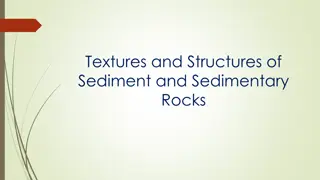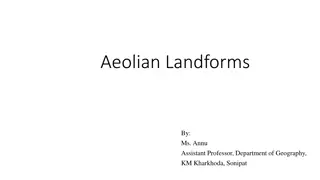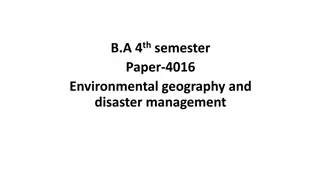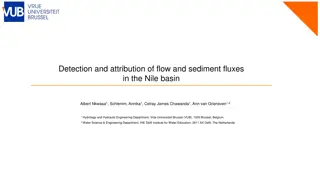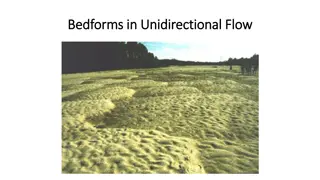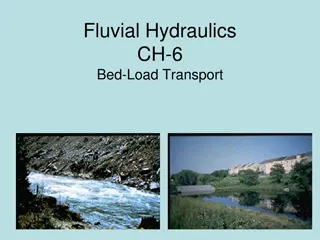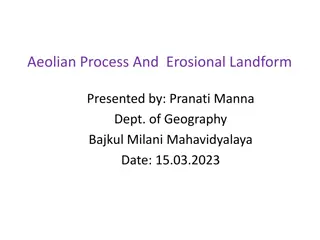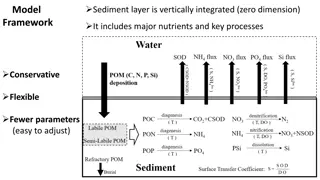Understanding Desertification and Aeolian Sediment Transport in India
Climates in India, particularly in the desert areas like Rajasthan, are heavily influenced by the monsoon season, with 32% of the land facing the threat of desertification. The upward eddie wind currents in the region can lift silt and very fine sand up to 4km. Various factors contribute to desertification, including the Himalayan Water Grab and complexities in sediment load dynamics. The Gangetic river system annually delivers 2,390 tons/km2 of sediment, while tropical river systems are influenced by both climate and anthropogenic activities. These regions have seen a heavy decrease in sediment loads, impacting the erosion/deposition equilibrium.
Download Presentation

Please find below an Image/Link to download the presentation.
The content on the website is provided AS IS for your information and personal use only. It may not be sold, licensed, or shared on other websites without obtaining consent from the author. Download presentation by click this link. If you encounter any issues during the download, it is possible that the publisher has removed the file from their server.
E N D
Presentation Transcript
Desertification and Aeolian Sediment Transport in India
Climates of India -Area of Rajasthan is predominantly desert or an arid climate. -Climate is heavily influenced by monsoon season. -32% of land facing threat of desertification
-Upward eddie wind currents of greater than 3km/h can lift silt and very fine sand up to 4km
The Source Half world s population dependent Historical land and border disputes Dynamic and evolving systems o Hydrologically and o Politically Seasonal fluctuations and vulnerabilities
Complexities of Sediment Load Limited Knowledge Climatic evolution Anthropogenic effects Intrabasin and regional variability Source/sink dynamics
Gangetic river system 2,390tons/km2annually Sediment delivery influenced primarily by climatic conditions Tropical river system 216tons/km2annually Sediment delivery influenced by climate and anthropogenic factors
Erosion/deposition equilibrium High erosion rate Decreased flow Aggrading environment Hungry water
Decreasing sediment loads Subsidence from oil extraction Rising sea level Decreasing deltaic aggradation
